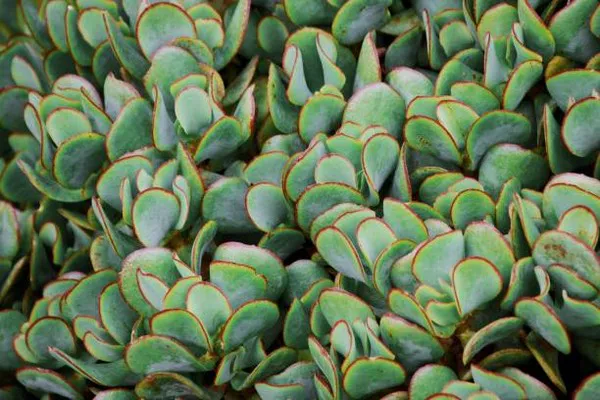Jade plants (Crassula ovata), also known as the money plant or lucky plant, have long been favored by indoor gardeners for their unique appearance and easy care requirements. With their fleshy, oval-shaped leaves and vibrant green color, jade plants make excellent additions to both homes and offices. However, one common question that arises among enthusiasts is, “How fast do jade plants grow?” In this article, we delve into the intricacies of jade plant growth, examining the factors that influence their growth rate and providing insights into their optimal care for enhanced growth.
Factors Affecting Jade Plant Growth Rate
Several key factors influence the growth rate of jade plants, including:
1.Age: The age of a jade plant significantly impacts its growth rate. Young plants tend to grow faster than older, more established ones. Typically, a young jade plant experiences more rapid growth during its initial years, slowing down as it matures.
2. Environmental Conditions: The environment in which a jade plant is cultivated plays a vital role in its growth rate. Factors such as light, temperature, humidity, and air circulation all impact how quickly a jade plant grows.
3. Light: Adequate light is crucial for healthy jade plant growth. While they prefer bright, indirect sunlight, excessively intense light can lead to sunburn or etiolation. Placing the plant near a window with filtered sunlight or using artificial grow lights can help maintain an optimal growth rate.
4. Temperature: Jade plants thrive in moderate temperatures, ideally between 65-75°F (18-24°C). Extreme temperature fluctuations can slow down their growth rate and even lead to stress-induced issues.
5. Humidity: While jade plants can tolerate low humidity levels, higher humidity can support healthier growth. Dry indoor air, common in heated spaces, can hinder growth and lead to leaf drop.
6. Air Circulation: Proper air circulation helps prevent fungal and bacterial diseases, which can impede growth. Good airflow also assists in maintaining a consistent temperature and humidity level around the plant.
7. Pot Size and Soil Quality: Jade plants grow optimally when planted in pots that provide enough space for root development. An appropriate pot size prevents root-bound growth, allowing the plant to expand at a steady rate. Well-draining soil is essential to prevent waterlogged roots, which can hinder growth and cause root rot.
8. Watering and Fertilization: Overwatering or underwatering can significantly impact a jade plant’s growth rate. Watering should be done thoroughly but infrequently, allowing the soil to dry out between waterings. Fertilization during the growing season (spring and summer) with a balanced, diluted fertilizer can promote healthier and faster growth.
Understanding the Growth Phases
Jade plant growth can be divided into several distinct phases, each with its characteristics and requirements:
1. Establishment Phase:
Young jade plants are in their establishment phase, characterized by rapid growth and the development of new leaves and stems. During this phase, providing adequate light, maintaining proper watering practices, and avoiding temperature extremes are essential to support healthy growth.
2. Maturation Phase:
As a jade plant matures, its growth rate gradually slows down. This phase is marked by the plant’s focus on strengthening existing stems and leaves rather than producing new growth. While the growth rate decreases, the overall health and appearance of the plant continue to improve with proper care.
3. Dormant Phase:
In colder months or under specific conditions, jade plants might enter a dormant phase. During this period, growth significantly slows down or halts altogether. It is essential to adjust watering and fertilization during dormancy to prevent overfeeding the plant.
Promoting Optimal Jade Plant Growth
To ensure your jade plant grows at its optimal rate and remains healthy, consider the following care tips:
1.Provide Adequate Light: Place your jade plant in a location with bright, indirect sunlight. If natural light is insufficient, supplement it with artificial grow lights designed for indoor plants.
2. Maintain Consistent Temperatures: Avoid exposing your jade plant to extreme temperature fluctuations. Keep it in an environment with temperatures between 65-75°F (18-24°C).
3. Water Wisely: Allow the soil to dry out between waterings to prevent overwatering. Water thoroughly, ensuring water drains out of the pot’s bottom to avoid waterlogged roots.
4. Use Well-Draining Soil: Plant your jade in well-draining soil mixtures that prevent water from pooling around the roots.
5. Fertilize Appropriately: During the growing season (spring and summer), feed your jade plant with a balanced, diluted fertilizer every 6-8 weeks to provide essential nutrients.
6. Monitor Humidity and Air Circulation: Maintain adequate humidity levels by misting the plant or using a humidity tray. Ensure proper air circulation to prevent disease and stress-related issues.
7. Repot When Necessary: If your jade plant becomes root-bound or outgrows its pot, consider repotting it into a slightly larger container with fresh soil.
Conclusion
The growth rate of jade plants is influenced by a combination of factors, including age, environmental conditions, pot size, soil quality, watering practices, and fertilization. By understanding these factors and providing appropriate care, enthusiasts can ensure that their jade plants grow at an optimal rate while maintaining their health and vitality. As these resilient plants progress through different growth phases, the rewards of a well-cared-for jade plant become evident in its striking appearance and longevity.


